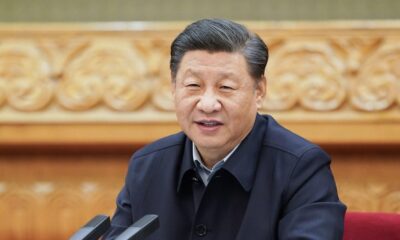China
Hong Kong Companies to Implement New Inspection Regime in Phase 3 Starting December 27, 2023

The new inspection regime on the Companies Register will now allow for the use of correspondence addresses and partial identification numbers (IDNs) for directors and company secretaries. This will protect personal information while still allowing public access for purposes outlined in the Companies Ordinance (Cap. 622).
Under the new inspection regime, (a) correspondence addresses instead of usual residential addresses (“URAs”) of directors and (b) partial identification numbers (“IDNs”) instead of full IDNs of directors, company secretaries, and other relevant persons like liquidators, will be made available on the Companies Register for public inspection. Meanwhile, companies can withhold the URAs and full IDNs (except the first part) on the registers where the information is maintained from public inspection. (The first part of the IDN is decided by an established rule, which is usually the first half of the sequence number if the IDN is an even number or the part that begins with the first character in the sequence and ends with the character that falls on the middle of the sequence if the IDN is an odd number.)
The URAs and full IDNs are regarded as “Protected Information” under the new inspection regime. Previously, the URAs and full IDNs of any company’s director, company secretaries, or other relevant persons could be accessed by the public. By replacing URAs and full IDNs with correspondence addresses and partial IDNs, the protection of personal information will be enhanced. At the same time, it will ensure the transparency of the Companies Register by allowing the public to access it for the purposes stipulated under the Companies Ordinance (Cap. 622).
This article is republished from China Briefing. Read the rest of the original article.
China Briefing is written and produced by Dezan Shira & Associates. The practice assists foreign investors into China and has done since 1992 through offices in Beijing, Tianjin, Dalian, Qingdao, Shanghai, Hangzhou, Ningbo, Suzhou, Guangzhou, Dongguan, Zhongshan, Shenzhen, and Hong Kong. Please contact the firm for assistance in China at china@dezshira.com.
Business
Wegovy: The Popular Weight-Loss Drug Now Available in China

Novo Nordisk launched Wegovy in China after approval, competing with Eli Lilly’s upcoming weight-loss drug. The treatment, costing 1,400 yuan, targets obesity but has potential side effects and isn’t covered by healthcare.
Wegovy Launch in China
Novo Nordisk recently launched its weight-loss drug, Wegovy, in China after obtaining approval from local health authorities in June. The introduction of Wegovy is expected to increase competition with Eli Lilly, which has also received approval for its weight-loss treatment, although it has not yet been released in China’s significant pharmaceutical market.
Cost and Accessibility
In China, a set of four Wegovy injections will be priced at 1,400 yuan (approximately $194), significantly lower than the drug’s U.S. price. However, patients will need to pay the full amount out of pocket since Wegovy is not yet covered by the national healthcare insurance plan.
Benefits and Side Effects
Research indicates that Wegovy can help users lose over 10% of their body weight. The drug contains semaglutide, which assists with appetite control and satiety. While Wegovy has been gaining traction globally, it may cause side effects like nausea. Concerns have emerged about its misuse among individuals who are not obese, prompting medical professionals to remain vigilant.
Source : Popular weight-loss drug Wegovy goes on sale in China
China
China Implements New Measures to Increase Foreign Investment in A-Share Market

China’s 2024 updates to strategic investment rules simplify A-share market access for foreign investors by lowering shareholding thresholds, reducing lock-up periods, and increasing investment options, reflecting a commitment to greater market openness and participation in economic reform.
The 2024 updates to China’s strategic investment rules simplify entry for foreign investors in the A-share market by lowering shareholding thresholds, reducing lock-up periods, and expanding investment options, signaling a commitment to increased market openness and flexibility through these new measures.
China’s capital markets are undergoing a significant transformation as part of the nation’s ongoing commitment to economic reform and openness. The recent update to the Administrative Measures for Strategic Investment in Listed Companies by Foreign Investors (hereinafter, the “new measures”) reflects this commitment, targeting an increase in foreign investor participation in China’s A-share market. For nearly two decades, China’s “strategic investment” pathway provided foreign investors with access to shares in A-share listed companies, but strict requirements—such as high minimum investment thresholds and prolonged lock-up periods—made it accessible only to select large investors.
The new measures, effective December 2, 2024, relax many of these restrictions to attract a broader and more diverse range of foreign investors. Key changes include lowering the minimum shareholding threshold from 10 percent to 5 percent, reducing the asset requirements from US$100 million to US$50 million in assets, and shortening the lock-up period from three years to one. Additionally, foreign investors can now use equity from unlisted overseas companies as consideration, while new investment routes, like tender offers, enhance flexibility.
In 2005, China introduced the Strategic Investment Regime as part of its broader efforts to open up its financial markets to foreign capital while retaining a level of control over sensitive industries. This framework allowed qualified foreign investors to acquire strategic stakes in Chinese A-share listed companies, aiming to promote foreign participation in the domestic market.
However, the stringent requirements—such as high minimum investment thresholds and extended lock-up periods—restricted this pathway to a limited pool of large, multinational investors. The regime reflected China’s cautious approach at the time, seeking to balance openness with economic stability and control over critical sectors.
A decade later, in 2015, China implemented its first significant revisions to the Strategic Investment Regime. These amendments sought to make the investment process more accessible by easing certain restrictions, aiming to encourage foreign capital inflow as China continued its gradual integration into global markets.
While some requirements were relaxed, the fundamental limitations—such as high entry thresholds and complex approval processes—remained in place, meaning that access to China’s A-share market was still primarily confined to major institutional investors with substantial capital.
| This article was first published by China Briefing , which is produced by Dezan Shira & Associates. The firm assists foreign investors throughout Asia from offices across the world, including in in China, Hong Kong, Vietnam, Singapore, and India . Readers may write to info@dezshira.com for more support. |
Read the rest of the original article.
China
Less is More: Rethinking Indonesia’s Tariffs on China
Rising concerns over China’s industrial overcapacity have led countries to impose higher tariffs, including Indonesia’s planned 200% tariffs on Chinese goods, risking Indonesia’s competitiveness and economic security.
Tariffs Escalate Amid Concerns of Overcapacity
Concerns regarding China’s industrial overcapacity have prompted countries to increase tariffs on Chinese goods. Indonesia, following the U.S. example, plans to impose tariffs as high as 200 percent on various Chinese imports, including textiles and ceramics. This response aims to safeguard local jobs from the influx of inexpensive Chinese products.
Economic Impact of Tariffs
These tariffs are designed as safeguards and anti-dumping measures against potential job losses in Indonesia. However, the ongoing investigations have not definitively shown that China’s practices are the root cause of these issues. The political appeal of broad tariffs might lead to unintended consequences, such as reducing the overall competitiveness of Indonesian exports and risking retaliatory measures from affected countries.
Dependency on Chinese Goods
Indonesia heavily relies on Chinese manufacturing inputs, which constituted over 26 percent of its intermediary goods imports in 2021. With competitive pricing, these inputs have enhanced Indonesia’s export capabilities, particularly to markets like the U.S., where the trade surplus increased from $8.58 billion in 2019 to $11.96 billion in 2023. Reducing trade openness may ultimately undermine the Indonesian economy’s resilience against geopolitical challenges.










